
Victorian–era fashion in Australia
Are you curious about what your ancestors wore? In the second blog in our series on Australian fashion history, we look at the late 19th and early 20th century fashion trends and the cultural influences that shaped them.
The mid-19th century can be marked by the Australian Gold Rush, which saw an influx of migration to Australia. With this migration came new fashions and traditional clothing styles that would later have a huge influence on the way people dressed. We also talk about this in part one of this blog series.
A blaze of beauty
The crinoline became a fashionable style for women in the 1840s to 1860s. This was originally a stiffened petticoat made from horsehair and linen. It was designed to give skirts a fuller, bell-shaped silhouette without the need for multiple layers of heavy petticoats – this would have been favourable in the Australian heat.
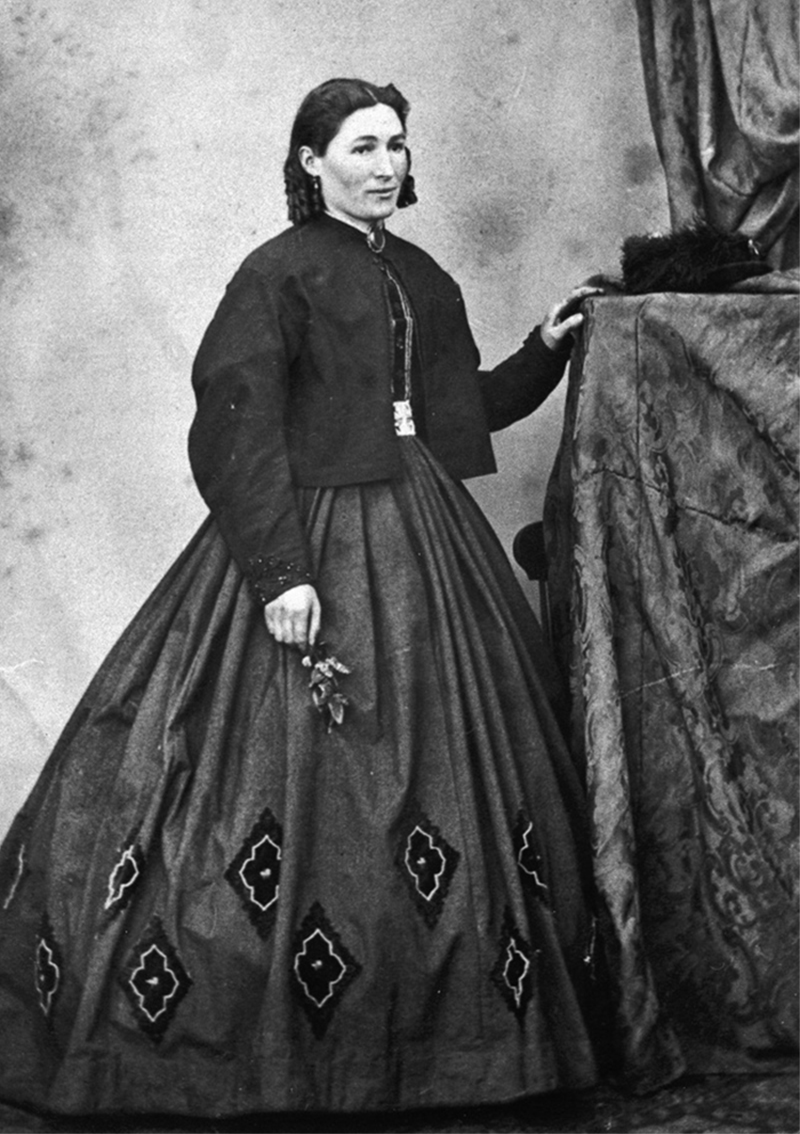
In the 1850s, the crinoline evolved into a cage structure made of steel hoops. This made it lighter and more comfortable to wear while still giving skirts the desired volume. They were, however, a notoriously dangerous contraption. If a women’s dress caught fire, it wasn’t easily escaped, and women were burnt alive. One poet from Geelong even published a poem about it.
In this admittedly hilarious article from 1863, one anonymous writer provided a scathing review of the crinoline. Pointing out its dangers, the author (who sounds suspiciously male) wrote that ‘the fashion of low grates and voluminous tarlatans combined has recently produced a succession of terrible accidents’.
‘“A blaze of beauty” used to be a penny-a-lining metaphor; but if matters go on as they have been doing lately, it is likely, in the most literal sense, to form an ornament of our drawing-rooms far more often than could be wished.’
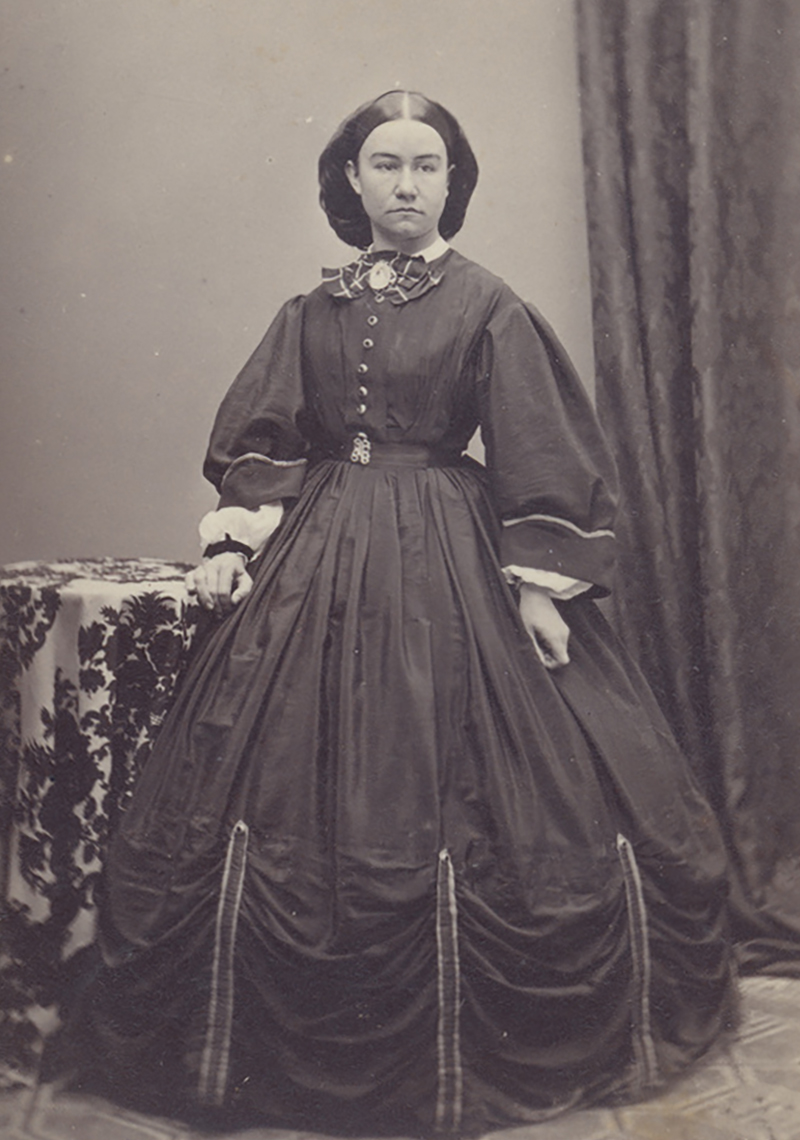
The author went on to speculate that:
‘The art of putting out a young lady will no doubt become a regular item in the education of a gentleman. Just as nice young men are valued now for their dexterity in putting on a lady’s shawl or cloak, so, in a few years, the ideal dandy will be known by his skill in throwing a young lady down and rolling her in the rug or blanket. It is probable that after a time the men will get accustomed their duties as drawing-room firemen and will not be backward to perform them.’
The crinoline was often paired with fitted bodices and wide sleeves, creating an exaggerated hourglass figure. Fabrics such as silk, taffeta, and velvet were favored by those who could afford them, while cotton and wool were common among the less affluent.
‘Her aim appears to be to persuade the male animal that the natural form of his appointed helpmate is that of a bell-shaped tent with a small protuberance of arms and features struggling out of the top of it.’
The Victorian-era dandy
Like women’s fashion, men's fashion in Victorian-era Australia followed British trends. However, by the mid-19th century, Australians had begun blending traditional British styles with more practical and durable clothing to better suit the Australian climate. This was more prominent in rural areas and during the gold rushes.
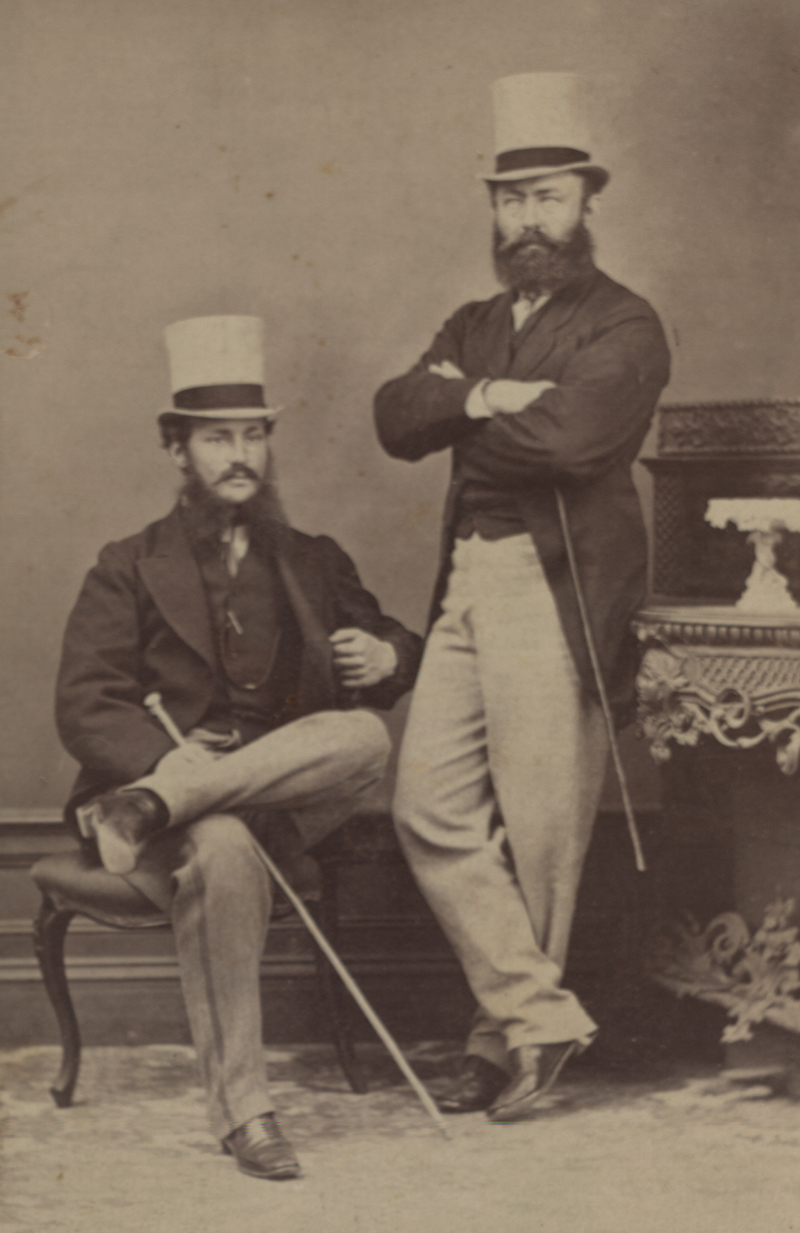
Early in the Victorian era, men commonly wore frock coats for formal daywear. However, by the 1860s and 1870s, the sack suit became a popular choice for less formal occasions. It featured a more relaxed, straight-cut jacket without a waist seam, marking a shift towards a more casual style. To accessorise, top hats continued to be trendy as did bowler hats. Akubra started producing hats in the 1870s.
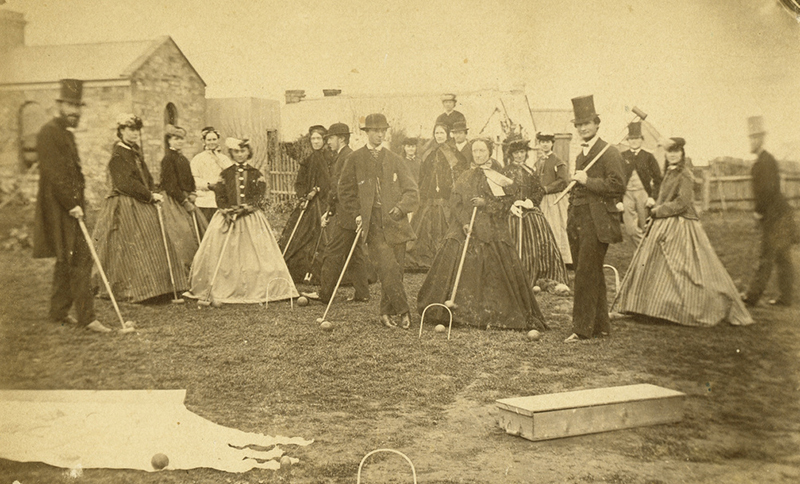
The morning coat was another popular choice for men later in the century. More formal than the sack suit, it featured a curved front that was shorter in the front and longer at the back.
For formal evening events, men typically wore tailcoats, paired with waistcoats and trousers. The tailcoat was short at the front and had long tails at the back. Black and dark colors were preferred for evening wear. Did someone say Victorian gothic?
Trendsetter
Henry Buck was a prominent figure in the Australian fashion industry. In 1890 he founded a menswear store in Melbourne, which quickly gained a reputation for offering finely tailored suits, shirts, and accessories that catered to the tastes of Melbourne's gentlemen.
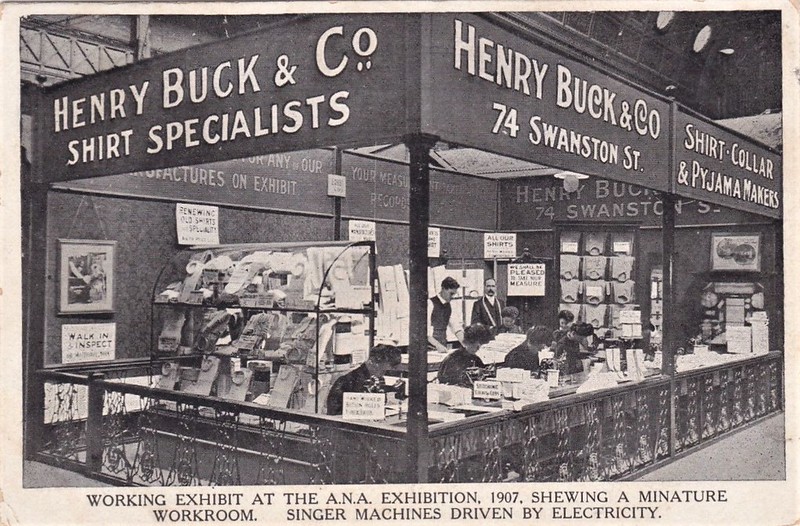
Buck was committed to providing the best in British and European fashion, importing luxurious fabrics and designs. His store became a symbol of refined elegance, setting the standard for men's fashion in Australia during the late 19th and early 20th centuries. The company, Henry Bucks, still exists today.
The hustle of bustles
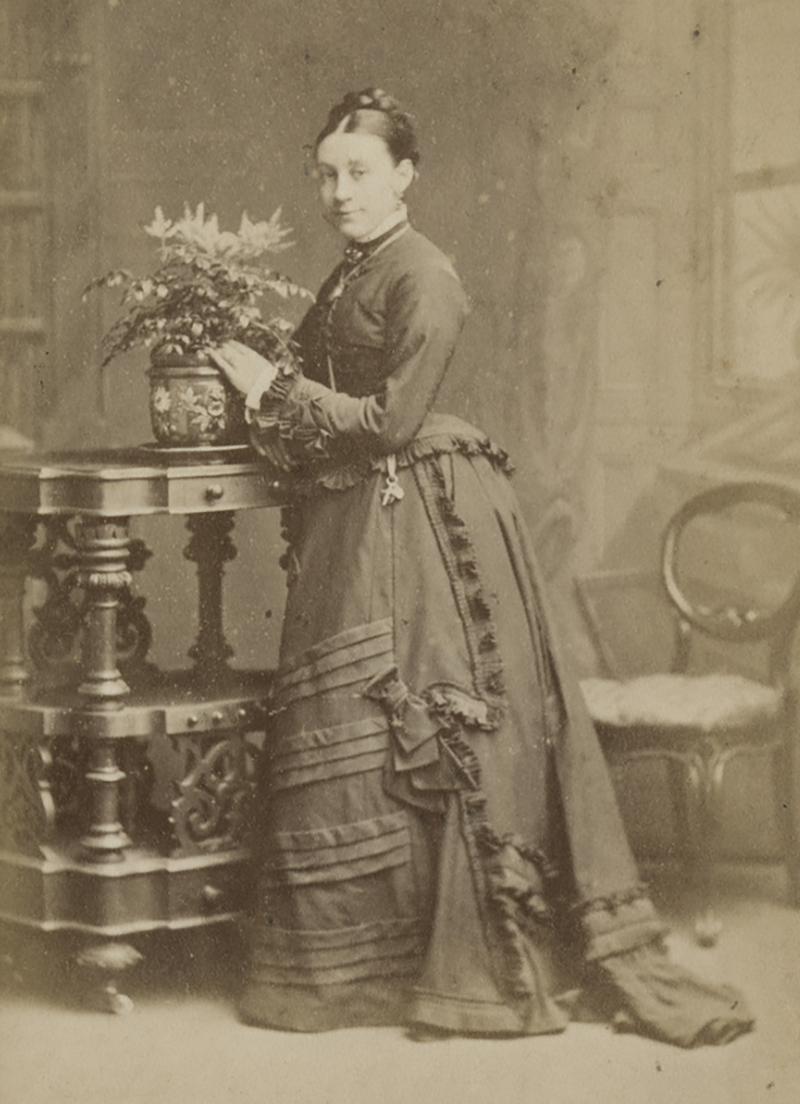
As the crinoline fell out of favour in the late 1860s, women’s fashion trends shifted towards narrower skirts. In the 1870s, the bustle style became one of the most iconic silhouettes of the Victorian era. This was a distinctive fashion trend focused on creating an exaggerated fullness or extension at the back of a woman's dress.
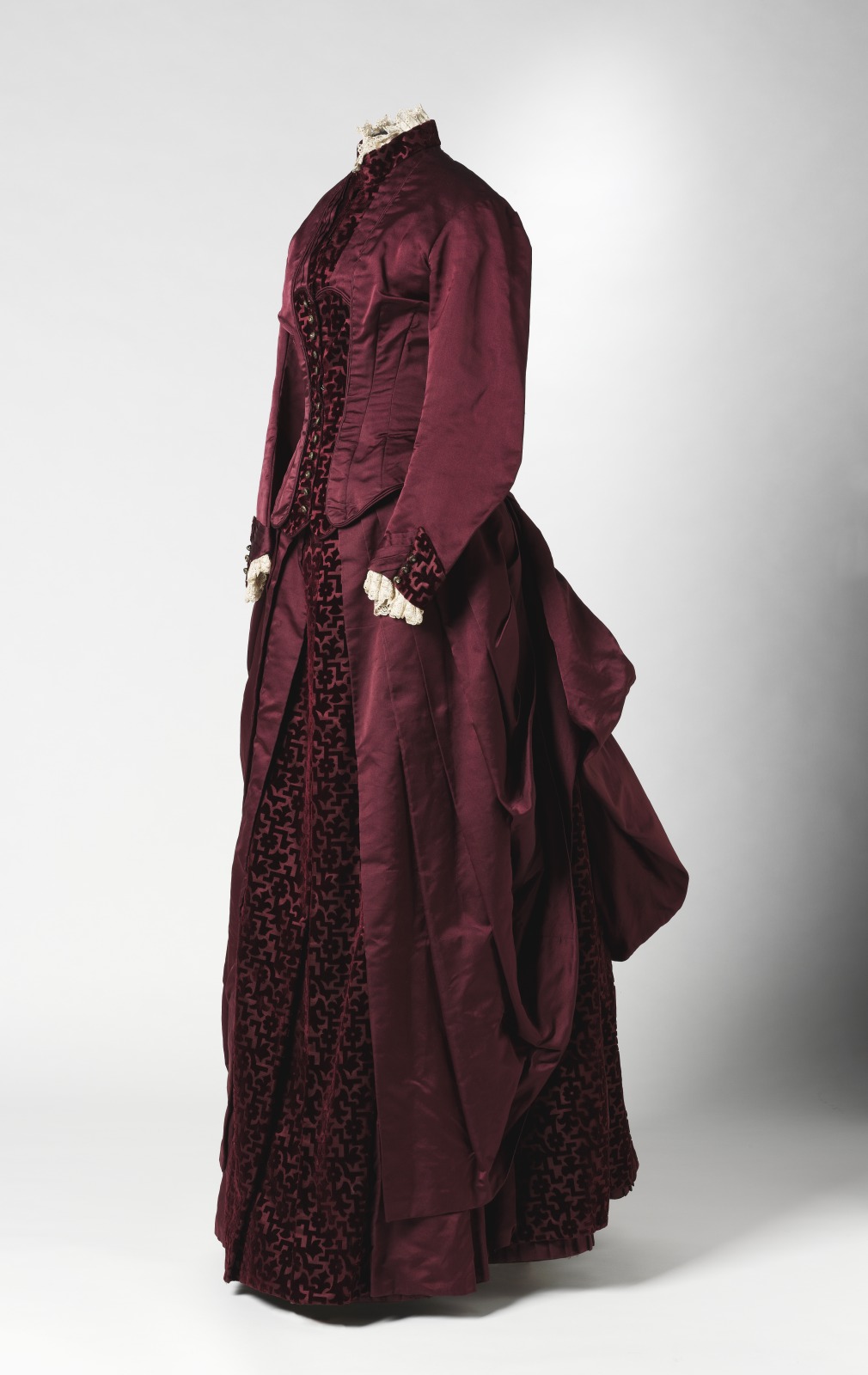
Rich fabrics like silk, velvet, and satin were draped and pleated. Dresses were then elaborately adorned with lace, fringes, and bows, drawing even more attention to the bustle, and enhancing the overall look.
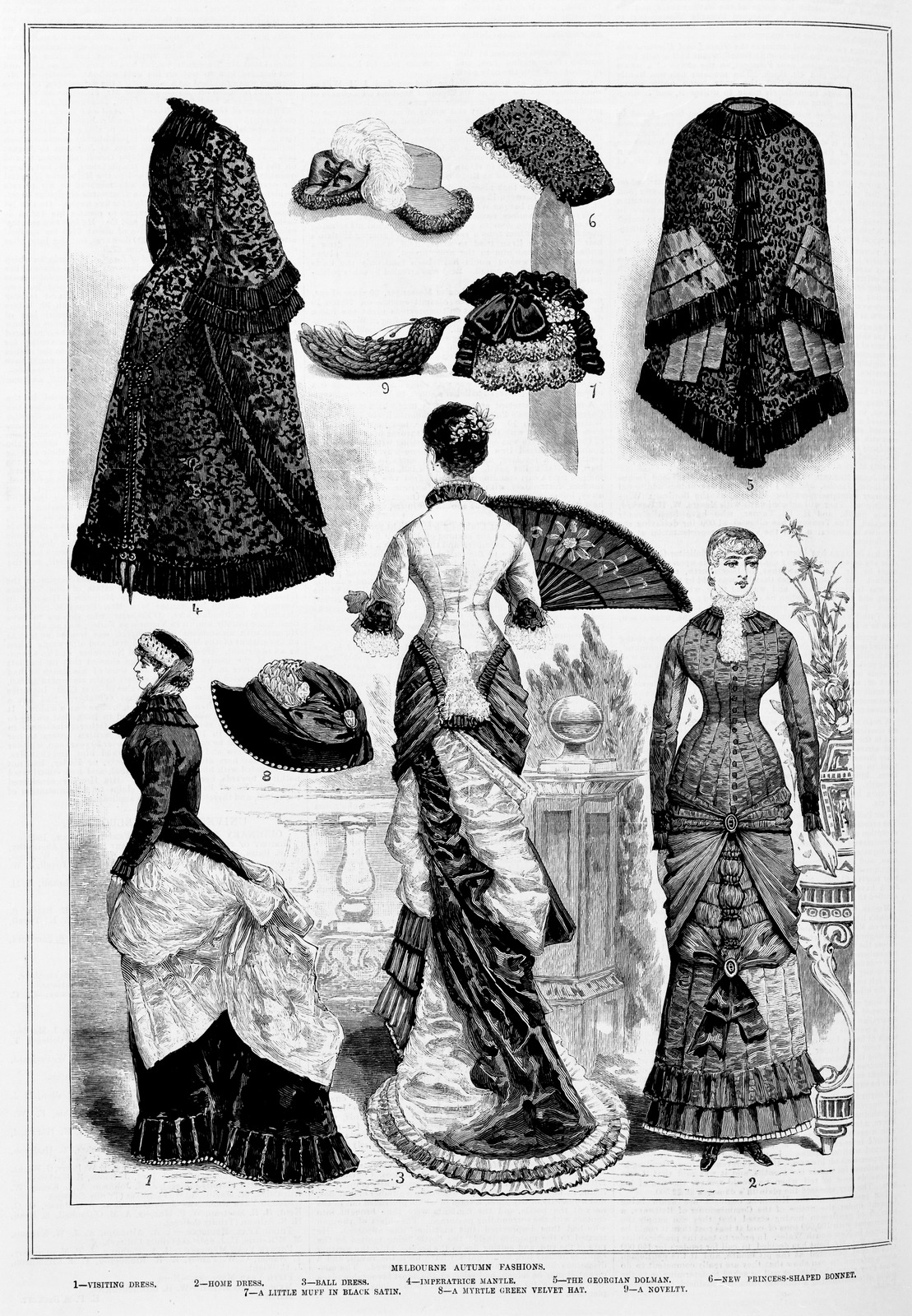
Turn of the century
The end of the 19th century brought with it a growing sense of Australian identity. Australia federated in 1901, and with it came a subtle break in Australian fashion trends following the styles of Britain. This shift was reflected in both women and men’s clothing.
As the Victorian-era – with its dark colour schemes and heavy textures – was ushered out, lighter, more pastel tones were introduced. Light, airy fabrics like cotton and linen also grew in popularity.
As the new century began, S-bend-style corsets became a staple in women’s clothing. This corset pushes the bust forward and the hips back creating an "S" curve.
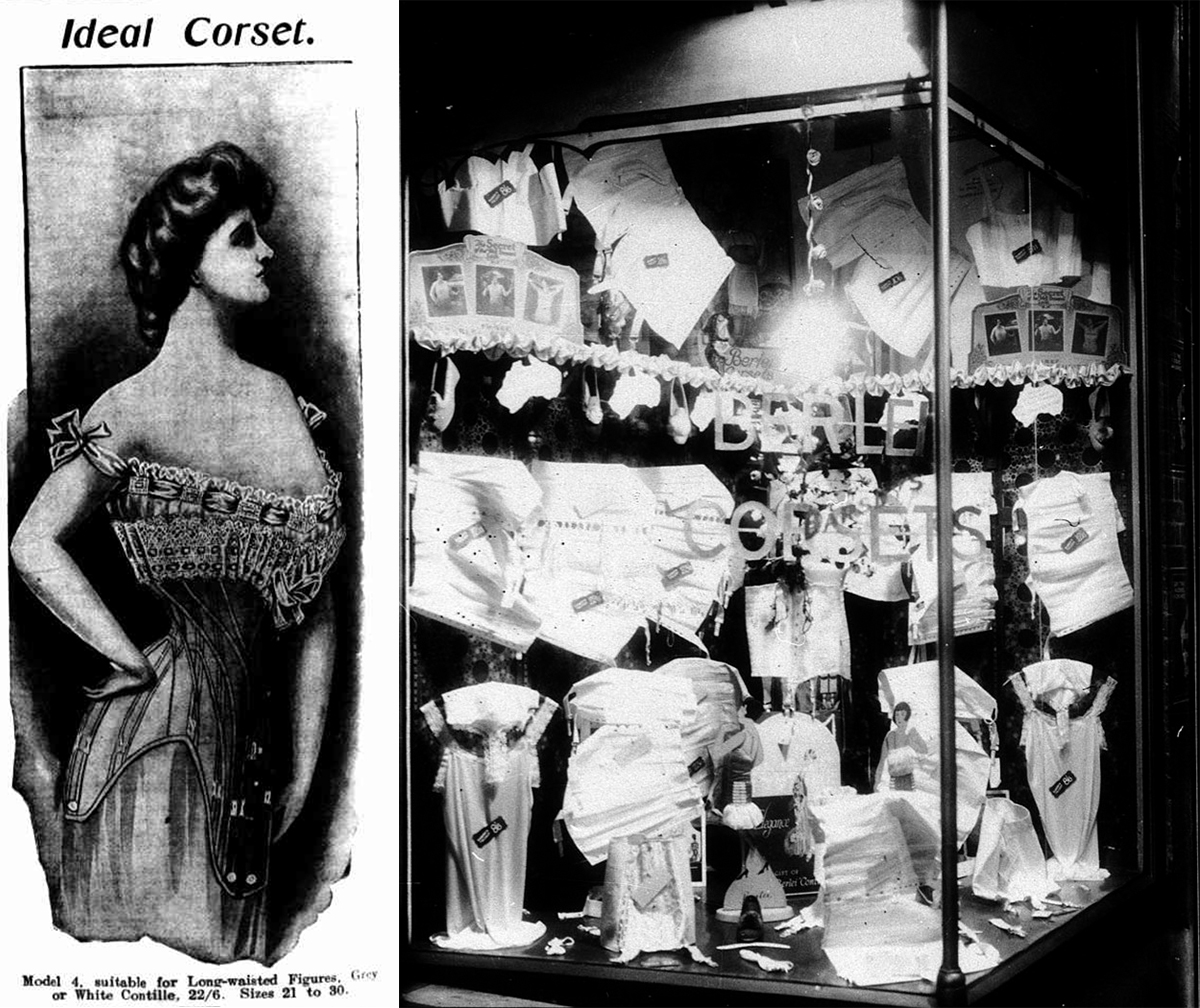
Skirts were still long, but they began to become slightly less voluminous and were often fitted smoothly over the hips before flaring out.
Large, wide-brimmed hats decorated with feathers, flowers, and ribbons were also a key feature of women's fashion. Gloves, parasols, and ornate brooches or necklaces were essential accessories.
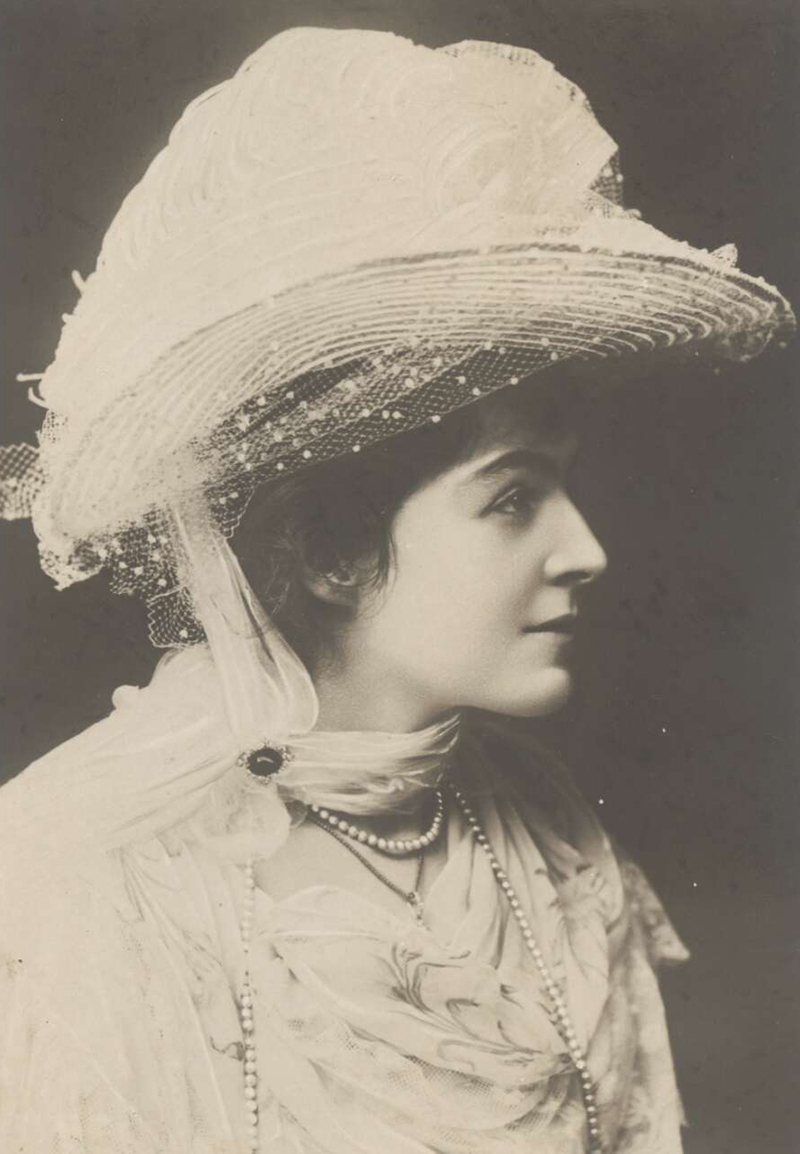
Australian fashion history
From leading trends and designers to the cultural influences that made them so popular, discover Australia’s fashion history: